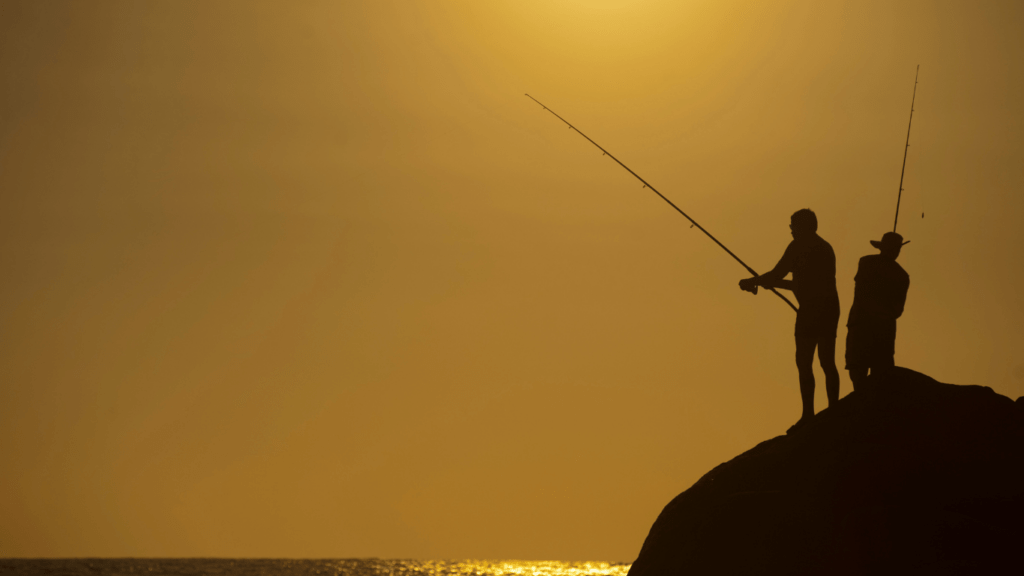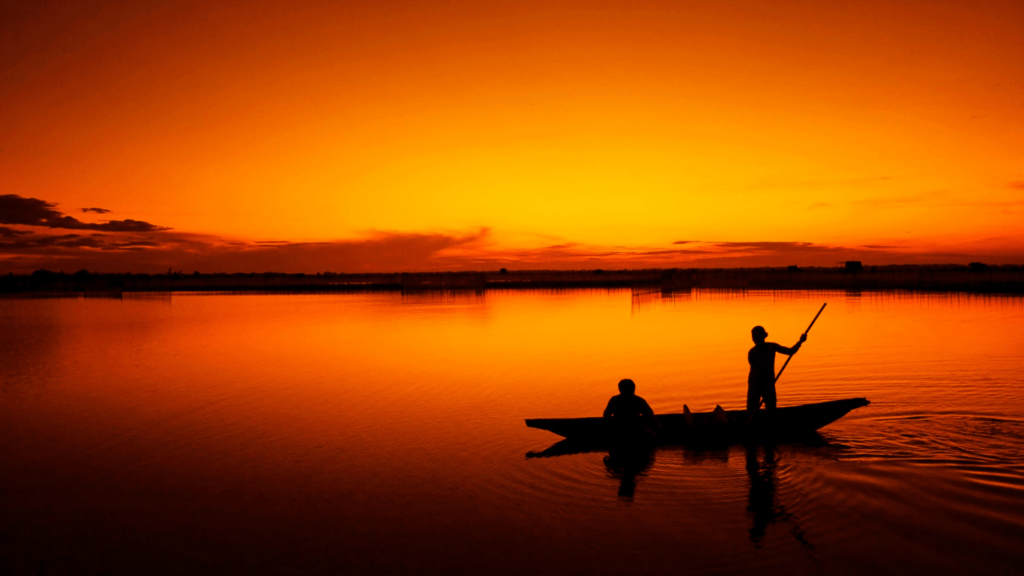Have you ever wondered how to decipher the secrets that water holds to find the best fishing spots? As an avid angler, I’ve discovered that understanding the subtle cues of water can significantly enhance your fishing experience. In this article, I’ll share valuable insights on how to read water like a pro and pinpoint the perfect locations to reel in that prized catch.
By honing your ability to interpret water patterns, currents, and structures, you can unlock a world of opportunities for successful fishing outings. Whether you’re casting your line in a river, lake, or ocean, mastering the art of reading water is a game-changer. Join me as I delve into the art of deciphering nature’s clues to identify those elusive hotspots where fish are plentiful and eager to bite.
Get ready to elevate your fishing game by learning how to read water effectively and uncover the best fishing spots that will make every angler’s heart race with anticipation.
Understanding Water Patterns for Fishing
As an avid angler, I know the importance of deciphering water patterns to locate the best fishing spots. Let’s delve into key aspects that can help enhance your fishing experience.
Observing Ripples and Currents
When I’m scouting for ideal fishing locations, I always pay close attention to ripples and currents on the water’s surface. Ripples indicate areas where underwater structures or obstacles may be present, attracting fish seeking shelter or food. Additionally, observing the direction and strength of currents can guide you to spots where baitfish gather, drawing larger game fish.
Interpreting Color and Clarity
One essential skill in reading water is interpreting its color and clarity. Clear water with a blue tint often signifies deeper areas, while muddy or murky water might suggest shallower regions. Different fish species have varied preferences for water clarity, so understanding these nuances can help you target specific types of fish more effectively. By analyzing the water’s color and clarity, you can make informed decisions on where to cast your line for a fruitful fishing expedition.
Identifying Underwater Structures
When I’m scouting for the best fishing spots, recognizing underwater structures is key to maximizing my chances of a big catch. Here are some essential tips to help me identify these structures effectively.
Finding Drop-offs and Reefs
Exploring drop-offs and reefs is crucial in locating productive fishing areas. Drop-offs are sudden changes in water depth, where shallow waters plunge into deeper areas. These are excellent spots for fish to hide and ambush their prey. Reefs, on the other hand, are underwater structures made of rocks, corals, or other hard materials. They attract a variety of fish species seeking food and shelter.
By understanding how to spot drop-offs and reefs through visual cues like changes in water color or depth, I can target prime fishing locations where fish congregate. Fishing near these structures increases my chances of hooking a variety of fish species and enjoying a successful day on the water.
Weather Conditions and Fishing Success
Understanding how weather conditions impact fishing success is essential for anglers looking to maximize their catch. The interplay between weather elements and water dynamics significantly influences fish behavior, making it crucial to analyze these factors before heading out for a day of fishing.
- Wind Direction: Wind plays a vital role in determining the movement of water and subsequently affects where fish are likely to be located. When planning a fishing trip, I always consider the wind direction to identify potential hotspots where fish may congregate. For instance, on a windy day, fish tend to gather on the leeward side of a water body, where the wind creates calmer conditions and pushes baitfish towards them.
- Barometric Pressure: Changes in barometric pressure can greatly impact fish activity levels. Low-pressure systems often result in more active feeding behavior among fish, making it an ideal time for fishing. Conversely, high-pressure systems may slow down fish activity, requiring anglers to adjust their techniques accordingly. Keeping an eye on barometric pressure trends can help me determine the best times to fish for optimal success.
- Temperature: Water temperature is a critical factor affecting fish metabolism and feeding patterns. Warmer water temperatures typically increase fish activity, while colder temperatures can cause fish to become sluggish. By monitoring water temperatures in different areas of a water body, I can pinpoint areas where fish are likely to be more active, leading to a more fruitful fishing experience.
- Precipitation: Rainfall and other forms of precipitation can influence water clarity and flow, affecting fish behavior. After a heavy rain, for example, runoff can carry nutrients into the water, attracting fish to feed in these nutrient-rich areas. On the other hand, clarity may decrease in muddy or turbulent water conditions, requiring adjustments in lure choice and presentation to improve visibility for the fish.
By considering these weather conditions and their impact on fish behavior, I can adapt my fishing strategies to increase my chances of success on any given day. Paying attention to wind direction, barometric pressure, temperature, and precipitation can help me identify the best fishing spots and optimize my fishing experience for maximum catch potential.
Gear and Techniques for Maximum Results
When it comes to optimizing your fishing experience and increasing your catch potential, having the right gear and employing effective techniques are crucial. Here are some key tips to consider:
Essential Gear for Successful Fishing:
- Quality Fishing Rod and Reel: Invest in a reliable fishing rod and reel that suits the type of fishing you’ll be doing. Match the rod’s action and power to the target species for better control and sensitivity.
- Variety of Lures and Baits: Carry a selection of lures and baits to adapt to different fishing conditions. Choose lures based on the species you’re targeting and the water conditions.
- Fishing Line and Leaders: Use high-quality fishing lines and leaders appropriate for the target fish. Consider the line’s strength, stretch, and visibility to improve your chances of a successful catch.
- Proper Clothing and Accessories: Dress appropriately for the weather conditions and wear clothing that provides comfort and protection. Don’t forget essential accessories like polarized sunglasses, a hat, and sunscreen.
- Cast Strategically: Practice different casting techniques to reach specific areas where fish are likely to be hiding. Work on accuracy and distance to cover more water effectively.
- Patience and Observation: Be patient and observant while fishing. Pay attention to any signs of fish activity, such as swirls on the surface or birds diving, to locate potential hotspots.
- Retrieve Techniques: Experiment with various retrieve techniques, including slow and fast retrieves, to entice fish to bite. Adjust your retrieval speed based on the fish’s behavior and feeding habits.
- Fish Fighting Skills: Learn how to handle and fight fish properly once you’ve hooked them. Use proper techniques to tire the fish out without risking losing it.
By focusing on the right gear selection and mastering essential fishing techniques, you can significantly increase your chances of success and make the most out of your fishing adventures.



 Karencita Oboyler brings her creative flair and deep appreciation for the natural world to her role at Terra Tactician Tactics. With a background in digital marketing and content strategy, Karencita is dedicated to crafting engaging and visually appealing articles that captivate the platform's diverse audience. Her work focuses on highlighting unique outdoor destinations, offering practical travel advice, and showcasing the beauty of nature through stunning photography and storytelling. Karencita's ability to blend creativity with valuable information has helped Terra Tactician Tactics stand out as a dynamic and compelling resource for outdoor enthusiasts.
Beyond her content contributions, Karencita is passionate about building a vibrant community around the platform. She is committed to fostering an inclusive space where everyone, from seasoned adventurers to curious beginners, feels welcomed and inspired to explore the great outdoors. Her innovative ideas and strategic approach to content development have been instrumental in expanding Terra Tactician Tactics' reach and impact. Karencita's enthusiasm for the project is matched only by her love for nature, making her an integral part of the team and its continued success.
Karencita Oboyler brings her creative flair and deep appreciation for the natural world to her role at Terra Tactician Tactics. With a background in digital marketing and content strategy, Karencita is dedicated to crafting engaging and visually appealing articles that captivate the platform's diverse audience. Her work focuses on highlighting unique outdoor destinations, offering practical travel advice, and showcasing the beauty of nature through stunning photography and storytelling. Karencita's ability to blend creativity with valuable information has helped Terra Tactician Tactics stand out as a dynamic and compelling resource for outdoor enthusiasts.
Beyond her content contributions, Karencita is passionate about building a vibrant community around the platform. She is committed to fostering an inclusive space where everyone, from seasoned adventurers to curious beginners, feels welcomed and inspired to explore the great outdoors. Her innovative ideas and strategic approach to content development have been instrumental in expanding Terra Tactician Tactics' reach and impact. Karencita's enthusiasm for the project is matched only by her love for nature, making her an integral part of the team and its continued success.